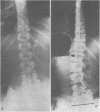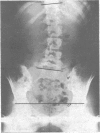Abstract
A visual examination of 1764 Oxford schoolchildren for scoliosis was followed by low-dose radiography of the spine in those who showed evidence of asymmetric body topography; radiography was repeated a year later to assess progression. Forty-four children had curves of 10 degrees or more. Two had a congenital abnormality and the remaining 42 were classified according to the type of curve: sacral tilt (compensatory), spinal (idiopathic), or combined (sacral tilt and spinal). Progression occurred in 6 (14%) children, none of whom had only a sacral tilt. These results suggest that only by measuring sacral tilt can benign compensatory curves be differentiated from true idiopathic scoliosis.
Full text
PDF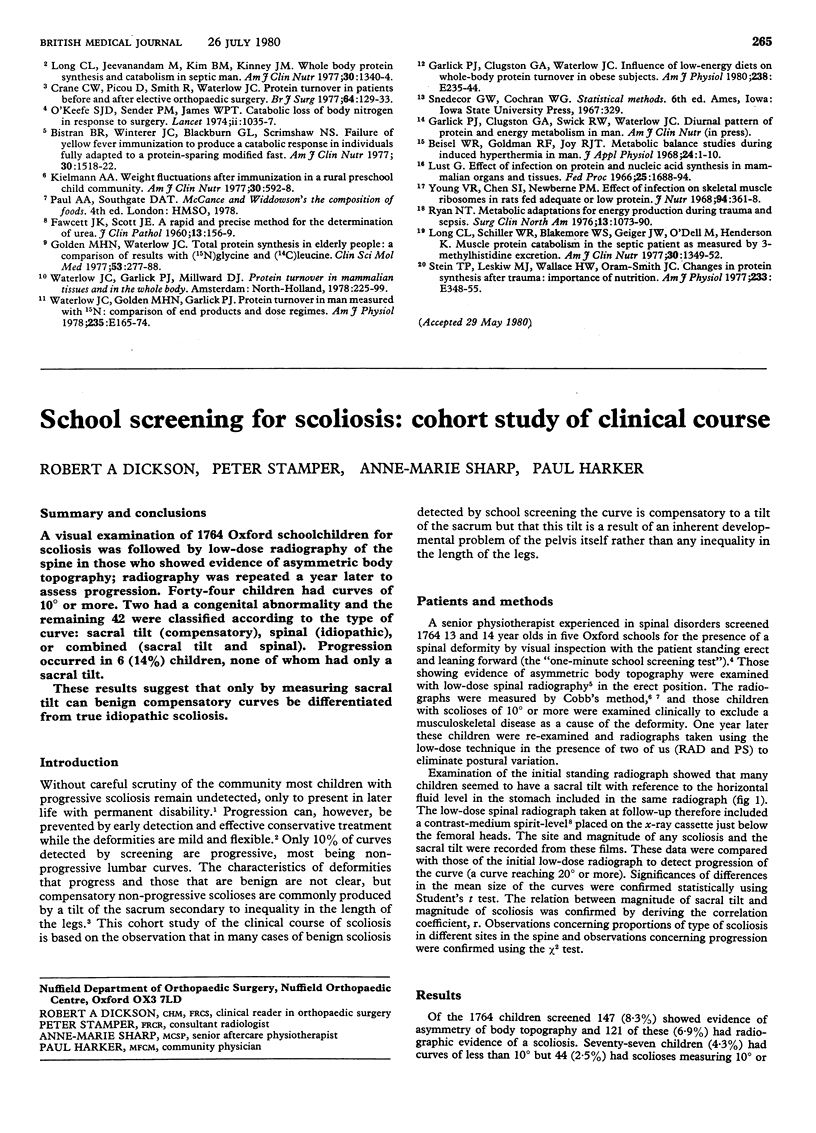
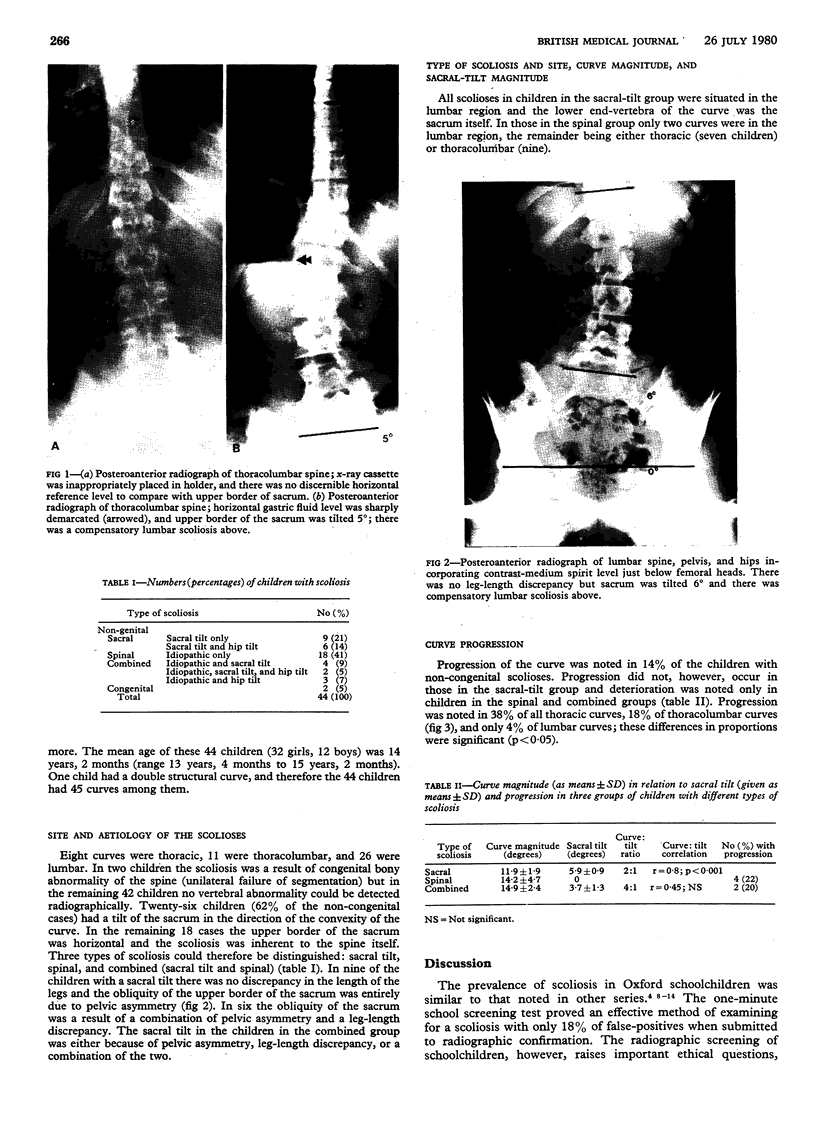
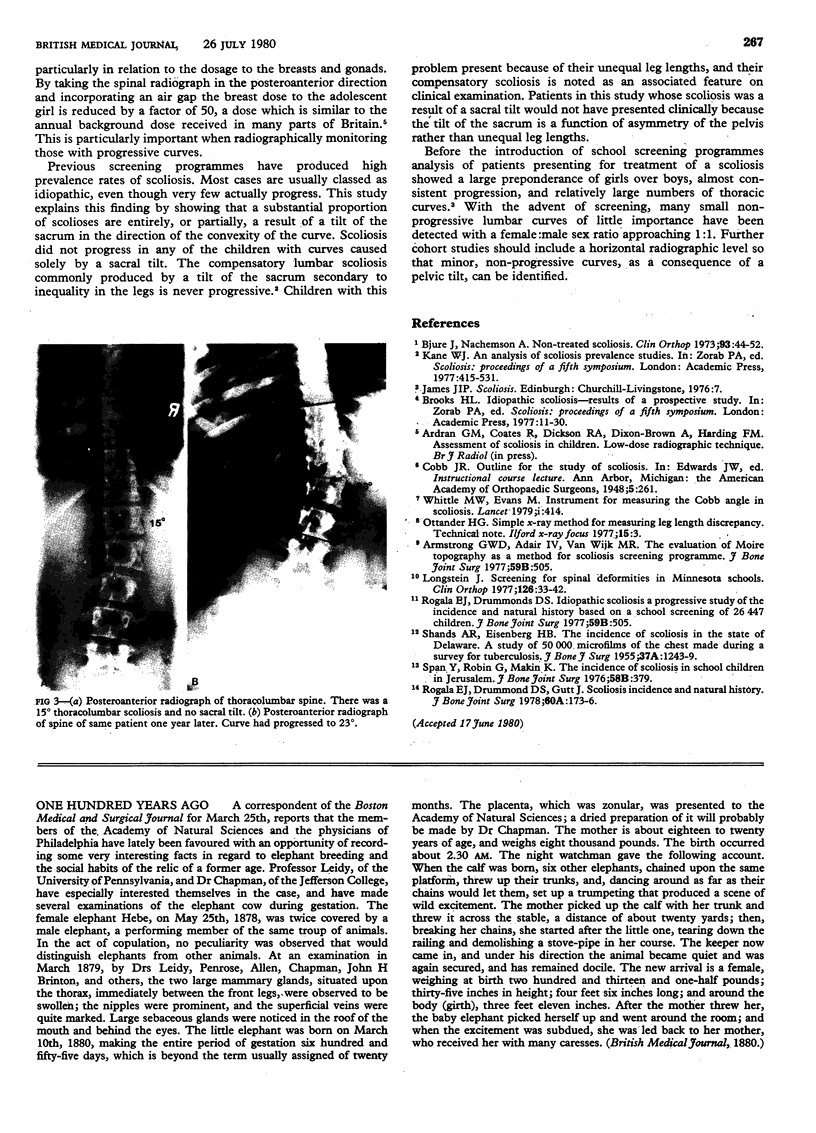
Images in this article
Selected References
These references are in PubMed. This may not be the complete list of references from this article.
- Bjure J., Nachemson A. Non-treated scoliosis. Clin Orthop Relat Res. 1973 Jun;(93):44–52. doi: 10.1097/00003086-197306000-00007. [DOI] [PubMed] [Google Scholar]
- Lonstein J. E. Screening for spinal deformities in Minnesota schools. Clin Orthop Relat Res. 1977 Jul-Aug;(126):33–42. [PubMed] [Google Scholar]
- Rogala E. J., Drummond D. S., Gurr J. Scoliosis: incidence and natural history. A prospective epidemiological study. J Bone Joint Surg Am. 1978 Mar;60(2):173–176. [PubMed] [Google Scholar]
- SHANDS A. R., Jr, EISBERG H. B. The incidence of scoliosis in the state of Delaware; a study of 50,000 minifilms of the chest made during a survey for tuberculosis. J Bone Joint Surg Am. 1955 Dec;37-A(6):1243–1249. [PubMed] [Google Scholar]
- Whittle M. W., Evans M. Instrument for measuring the Cobb angle in scoliosis. Lancet. 1979 Feb 24;1(8113):414–414. doi: 10.1016/s0140-6736(79)90887-0. [DOI] [PubMed] [Google Scholar]



